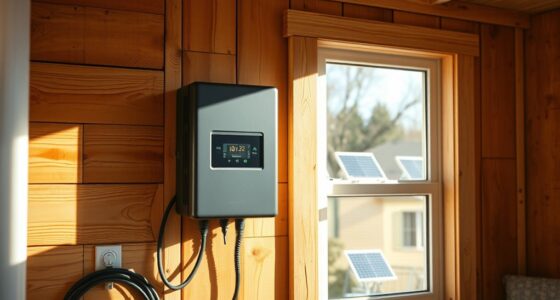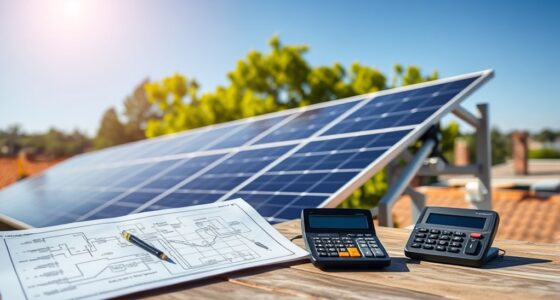The question of whether solar panels can cause cancer depends on the parties involved, including both the manufacturers and those working with the raw materials. While solar panels are generally seen as safe for users, those involved in the manufacturing process may face a higher risk due to exposure. Manufacturers usually guarantee the safety and quality of their products. The panels often have safety certifications on their labels, showing compliance with certain standards.

Exposure to cadmium
The use of solar panels and other solar energy equipment containing cadmium is not safe for human health. This toxic metal has been linked with cancer and other health problems. It has been shown to cause DNA damage and inhibit certain DNA repair enzymes. It can also disrupt the cellular signaling pathway and cause tumors. It is a potent carcinogen and has been linked to several cancer types.
Although cadmium does not have any biological function in plant growth it is still a common element in plants. It is found in plant materials and is readily absorbed by plants. It can be found in all parts of plants, including the food we eat. In addition, cadmium is also a key component of many Ni-Cd batteries. It can also be found in house dust from areas with contaminated soil.
Cadmium’s toxic effects on mitochondria are what causes its toxic toxicity. Exposure to it increases the production of ROS (reactive oxygen species), inhibits respiratory chain enzymes and increases permeability of the inner mitochondrial membrane. It also affects the function of antioxidants and enhances ROS. Therefore, it is extremely harmful to human health. It is essential to protect yourself from solar panels and other sources of cadmium exposure.
Cadmium, despite its many benefits, is a toxic metal. It is known to cause cancer in humans and may cause other health problems as well. It can affect the cardiovascular, gastrointestinal, reproductive, nervous, and renal systems. This toxic substance is also known to cause osteoporosis, a type of bone disease.
Hydrofluoric acid
Hydrofluoric acid, a toxic chemical, is found in solar panels and other materials. The chemical is released when solar panels are flocked. To reduce the refraction of sunlight, the silicon wafers are dipped in hydrofluoric acids. The acid is then converted to solid fluoride waste which must be properly handled by a specialist waste-handling firm. One of the factories was tested by a local environmental agency in China and fluoride levels exceeded the allowed limit.
Hydrofluoric acid is a highly toxic compound derived from hydrogen fluoride, which is dissolved in water. The compound is used in refrigerants, as well as in other manufacturing processes. It can damage cells and cause burns, which can be fatal. Even survivors can experience long-term effects. It is therefore imperative to use as little hydrogen fluoride as possible, as this would improve human safety.
The chemical is also found in the manufacturing process of solar panels. As a result, people who are involved in the manufacturing process are at a higher risk. To protect workers from toxic substances, solar panel manufacturers must adhere to strict safety standards. In addition, the safety of the solar panels is guaranteed by the manufacturers.
Silicium
Although it might seem unlikely that solar panels could cause cancer in humans, some studies have shown that thin film solar cells used in solar panel production may contain a carcinogen. These cells are a common component of home solar panels. Solar panels are a great way of reducing emissions from natural gas fracking and coal burning. But, you are at greater risk of developing cancer if solar panels are consumed or any other products that contain them.
Silicium is a highly toxic chemical and can cause a variety of health effects. Silicium can cause cancer and skin problems such as burns. It can also cause harmful air pollutants and irritation to the lungs. High levels of cadmium can cause environmental damage.
Workers are at risk when solar panels are manufactured. Occupational health regulations and state and local government regulations are in place to ensure that the safety of workers is not compromised. However, workers in the solar industry are still susceptible to falls from the roof during installation. They also risk back injuries due to improper lifting. They may even be electrocuted.
The American Cancer Society has claimed that the materials in solar panels may cause cancer, but the World Health Organization has refuted this claim. Numerous studies have shown that solar panels emit EMFs due to the smart meter, solar inverter, and electrical controller. Low-frequency radiation can be harmless but high-frequency radiation can cause DNA damage.
Cadmium, which is also found in solar panels, is another harmful element. Exposure to cadmium may cause prostate, kidney, bladder cancer, and even prostate cancer. High levels of cadmium can also cause vomiting, diarrhea, or death.
Hydrogen sulfide
Hydrogen sulfide (H2S) is a small gaseous substance that has a significant role in our body, including in regulating blood pressure and helping prevent cancer. It is produced in small amounts in cells and delivers information to proteins that perform critical functions in the body. Until now, scientists were unable to observe this process in living cells. Scientists have now been able to observe how H2S is produced in cells using a new technique. This has made it possible to better understand the gas’s function inside the human body.
While there are no conclusive studies that prove hydrogen sulfide can cause cancer, studies have shown that it can increase the likelihood of certain types of cancers. Researchers have found that certain types of cancer overexpress H2S-producing enzymes, such as cystathionine-b-synthase (CBS), which can lead to tumor growth. These cells have a higher proliferative signaling pathway and are more likely to migrate.
In addition to the potential for cancer, hydrogen sulfide is present naturally in many types of natural gases, including crude petroleum, natural gas, and volcanic gasses. It can also be produced by the bacterial breakdown organic matter, such as food waste. In landfills, hydrogen sulfide can cause odors that can disturb human health.
The Massachusetts Department of Environmental Protection recommends the use of portable/stationary continuous monitoring field equipment. This equipment is ideal to monitor landfill gas emissions as it provides near-continuous sampling capabilities. This method can account for changes in hydrogen sulfide concentration over time. This allows monitoring of the efficacy of landfill gas control measures.
Below is a sample data set. This table assumes that the hydrogen sulfide meter is newly installed. It is important to note that a single hour’s reading can exceed 30 ppb.
Thin-film solar panels
Despite their popularity, there has been some controversy surrounding the safety of thin-film solar panels. Some claim that they can cause cancer, but the reality is far different. Unlike coal and gas, home solar panels almost always use non-toxic silicon cells. Solar energy is a valuable source for renewable energy that reduces pollution, even those caused by fossil fuels.
Solar panels can be installed on the roofs of buildings and in solar farms. The question of whether these panels cause cancer is being debated, but most studies have shown that there are no risks associated with them. Solar energy is derived from photovoltaic technology, which involves using cells to absorb sunlight and convert it into electricity. The electricity is then stored in batteries and fed into the electrical grid. There are two main types of solar panel technology using silicon cells: conventional and thin-film.
Thin-film solar panels are relatively cheap to produce and are often the most effective choice for residential solar. They are lightweight and easy to install. They can also be used in different directions, unlike traditional solar panels, which can’t be installed in shady areas. And because of their thin-film nature, they aren’t affected by high temperatures, which is another advantage.
While they’re safer than their silicon counterparts, thin-film solar panels use toxic elements. Their manufacturing process uses materials like cadmium and gallium, which are typically found in waste products of mining. While these elements aren’t dangerous in small amounts, they are toxic in higher concentrations.
Hi, I’m Emma. I’m the Editor in Chief of Tiny House 43, a blog all about tiny houses. While tree houses are often associated with childhood, they can be the perfect adult retreat. They offer a cozy space to relax and unwind, surrounded by nature. And since they’re typically built on stilts or raised platforms, they offer stunning views that traditional homes simply can’t match. If you’re looking for a unique and romantic getaway, a tree house tiny house might just be the perfect option.










